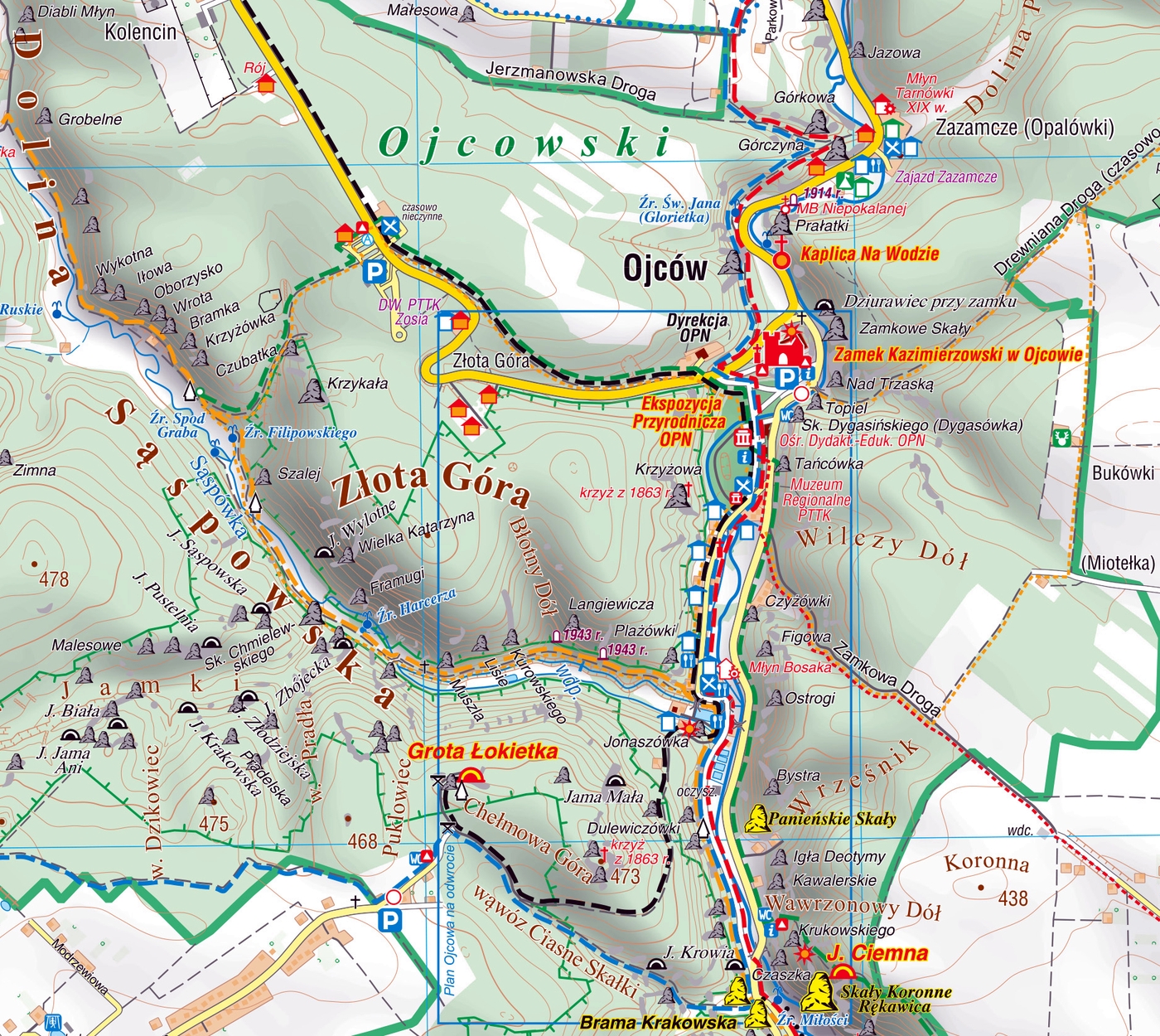
Ojców National Park
Ojcowski Park Narodowy
Compass
Ojców National Park is a national park in Kraków County, Lesser Poland Voivodeship in southern Poland, established in 1956. It is Poland's smallest national park. The park is approximately 16 kilometers (10 mi) north of Kraków, in the Jurassic Kraków-Częstochowa Upland. Karst topography of soluble bedrock characterizes the park, which in addition to two river (the Prądnik and Saspówka) valleys contains numerous limestone cliffs, ravines, and over 400 caves. The largest of these, Łokietek's Cave (said to have sheltered King Władysław I Łokietek, for whom it was named), is 320 meters (1,050 ft) deep. The area is also noted for its rock formations, the most famous being Hercules' Club, a 25-meter (82 ft)-high limestone column. The park contains numerous castles, including a ruined Gothic castle at Ojców and a better-preserved Renaissance castle at Pieskowa Skała, both of which were part of a late-medieval system of defenses in southwestern Poland, known as the Trail of the Eagles' Nests constructed by the order of King of Poland, Kazimierz the Great. There are two museums in the park, the Professor Władyslaw Szafer Museum (named for the first person to advocate the creation of a national park in the Ojców area), and a branch of the Kraków-based National Art Collection, located in the Pieskowa Skała castle.
Country
Poland
Scale
1:20 000


